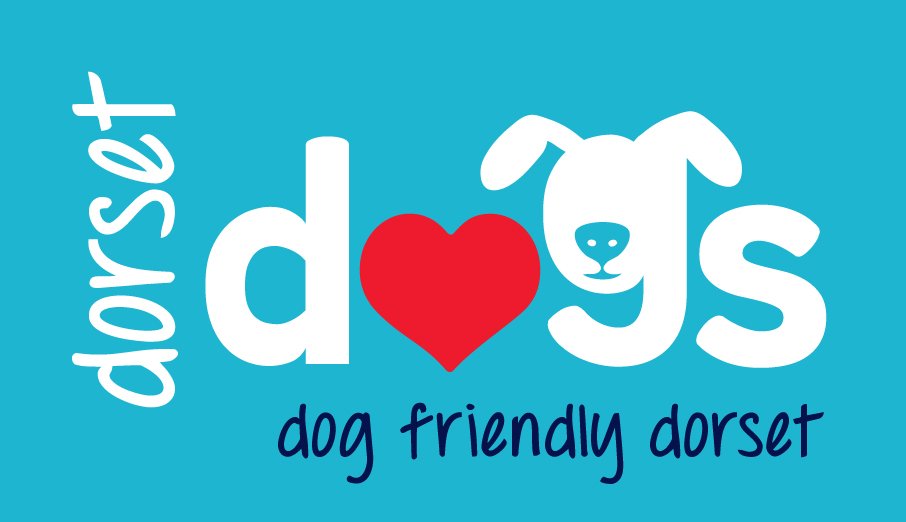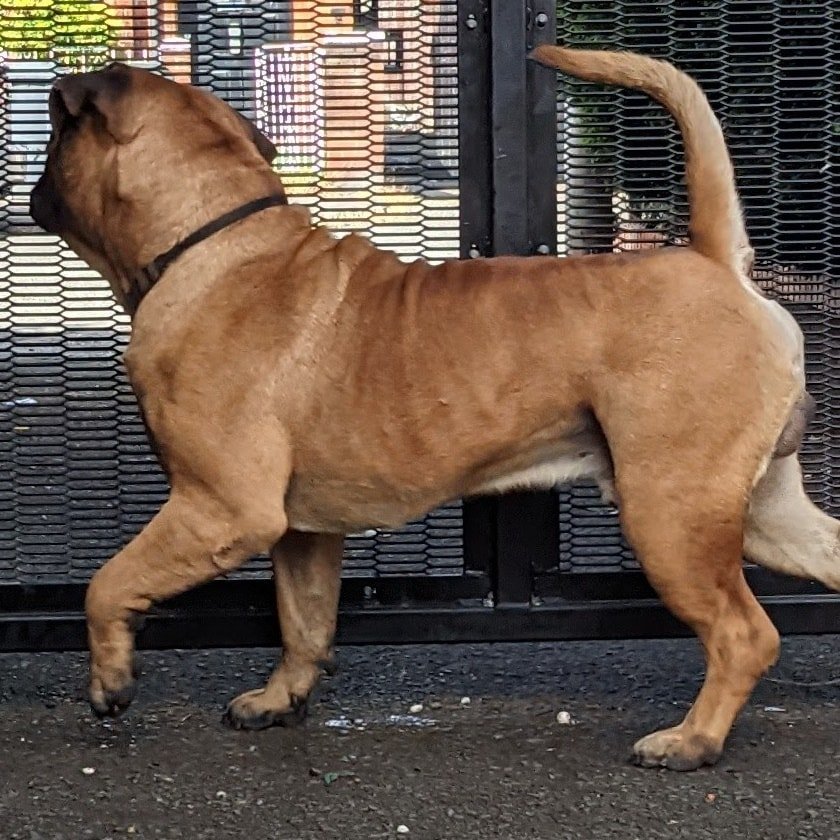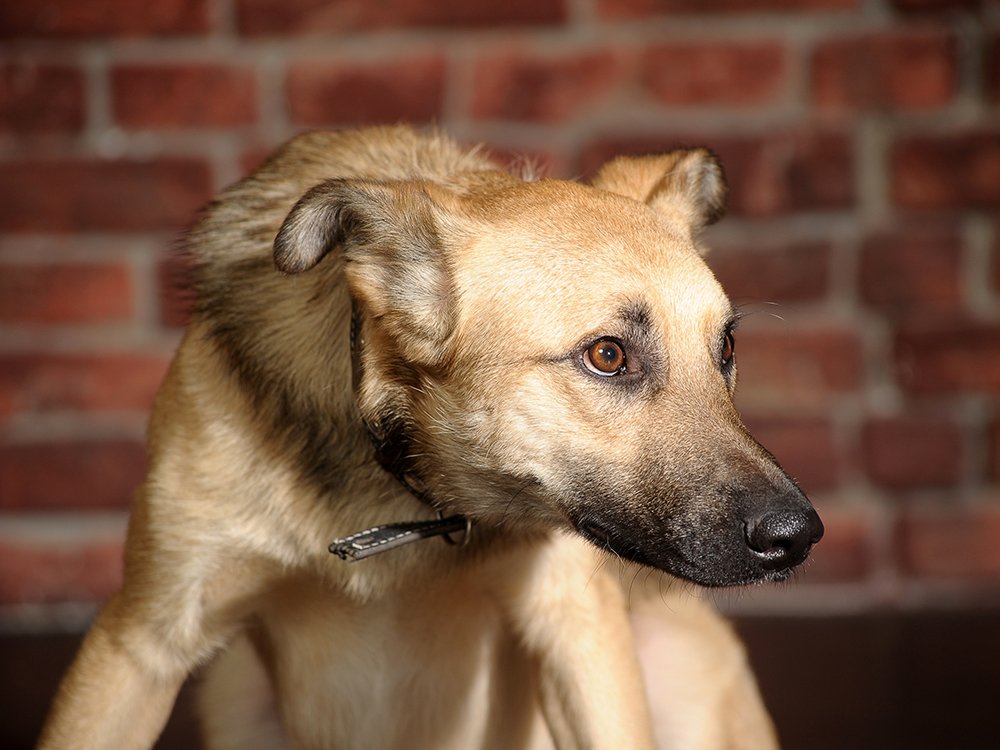Dog Body Posture
Merlin demonstrates what is often referred to in show dog language as The Stand
Introduction Video - The Body
Let’s explore some images of dog body language
Using the technique of OBSERVATION followed by ANALYSIS
Write down what you observe and a second column for what you interpret for each of the following images and videos.
Look at the image from this video before pushing play (blown up on the right)
What is this dog about to do?
Observe and then interpret. And then press play for the answer.
Let’s continue to explore some images of dog body language
Using the technique of OBSERVATION followed by ANALYSIS
Write down what you observe and a second column for what you interpret for each of the following images and videos.
The Body Lesson
QUESTIONS….POSTURE OF DOGS’ BODY
Write down your answers before scrolling to the answers at the bottom.
Interpret the below statements. What do they mean and what will likely happen next… How might the dog be feeling?
Straight legs, body upright, or slow movement forward with stiff legs
Body slightly bent forward and feet braced
Hackles, raised hairs on the shoulders and back
Stiffening up
Swollen hairs, only on the shoulders
Dog makes him/herself smaller or crouches down while looking up
Pushing with the muzzle
Dog sits down while being approached by another
Rolls over on their side, exposes throat and belly and completely breaks eye contact
Clash with the shoulder on shoulder
The dog holds up a leg
Rolls over on the ground and rubs back and shoulders (sometimes also with his nose)
Play bow but when is it not a play bow?
Turning head to side
Moving whole body away and to side
Square set, full on body posture
Spatial awareness
Stalking/creeping
Standing crouched and body crunched
Humping
Lying down
Noise
The wrestle
Let’s continue to explore some images of dog body language
Using the technique of OBSERVATION followed by ANALYSIS
Write down what you observe and a second column for what you interpret for each of the following images and videos.
What is going on below at this frenchies meet-up? Read each of the dogs.
Things of interest
The Body Shake
Obviously dogs shake themselves when they are wet. But what about the “shake off” in body language on a dry dog?
The shake off is an excellent way of transitioning the body out of tension, trauma, fight/flight and into a more relaxed state.
Shaking and panting can also be natural ways the body releases emotion and transitions into another state of being.
Hair
Much like your own “goosebumps,” the hair can raise along a dog’s back when he is upset or aroused. This is also known as piloerection or “raised hackles” and can occur across the shoulders, down the spine, and above the tail. Hackles don’t always mean aggression is imminent, but they are an indicator that the dog is excited or upset about something.
A frightened or stressed dog may also shed more than usual.
Tell me what you notice first and analyse second
about the dog’s body language in this short clip below.
ANSWERS: POSTURE OF YOUR DOGS’ BODY
Straight legs, body upright, or slow movement forward with stiff legs
Bold stance, chest out, threatening slow movement, tension in legs, cat-like leg movement.
Body slightly bent forward and feet braced
Ready for lunge or launch into play or movement
Hackles, raised hairs on the shoulders and back
Feeling uncomfortable, tension, aroused.Not necessarily an indication of attack. But can be.
Some dogs like the ridgeback have it permanently as part of their design. For some long coat dogs you will see the muscles being raised under the fur rather than seeing the hair standing up on edge.
Stiffening up: you would expect a tense body, squaring off stance, tight mouth and jaw and body
Swollen hairs, only on the shoulders
Sign of nervousness about the situation. I don't like this. Perhaps a feeling of being forced into an aggressive stanceDog makes him/herself smaller or crouches down while looking up
Let's not fight. An active submissive gesture to reassure the other. Fearful and protecting vital organs by closing and crouching the body around them.Pushing with the muzzle
I would like to ... can be used to ask for something and as a sign of affectionDog sits down while being approached by another
Allows her/himself to be sniffed. A small peaceful gesture. But it can be displacement, “please come and help” (more in puppies and teens) when they are less sure of themselves
Rolls over on his/her side, exposes throat and belly and completely breaks eye contact
I mean no threat. Depends if the body if tense or relaxed. If tense it will be asking for space but showing they mean no harm. If it is relaxed it may be inviting a calming, reassuring stroke or a sniff if it’s another dogClash with the shoulder on shoulder
Vying with each other, competitive, can be overbearing and threatening, can be a warning offThe dog holds up a leg
I am a bit scared and worried. Can be a sign of uncertainty and moderate tension. Or appeasement, it can be: thinking about what do next. It can be demanding and pawing to be given something, a conflict of emotion (I want to please but I don’t feel comfortable), not sure, insecurity. Showing where they want touch or attention if the leg is open and body relaxed.Rolls over on the ground and rubs back and shoulders (sometimes also with nose)
I am happy and everything is ok. A ritual that often takes place when something pleasant has happened. A celebration. A rolling in the scent of the joy of the moment in the given place. Let’s hope this is not fox poo…Play bow but when is it not a play bow?
If the tail is relaxed and the play bow has the head low and it is followed by wiggly or bouncing body language it is likely to induce play.
But if the tail and body are stiff and the eyes are doing a hard stare and the dog is placing their body over an object it can sometimes be a resource guarding warning signal.
If the dog backs away from the object and does the play bow it is more a sign of an invitation to play with that item.
Turning head to side:
I am not a threat, but if it is not listened to it can also be followed by attack
Moving whole body away and to side
This is walking away from a situation and is usually done slowly and with awareness. This is what we want our dogs to be doing and reading a situation for themselves if there is a threat and deciding to walk away.
Square set, full on body posture
Usually confrontational, a sign of confidence but can be over bearing and overly assertive. Intimidating. If combined with a hard stare it is a warning and pushing out the chest is often apparent with a square set in this instance. The dog’s body is balanced with either the weight forward, to the side, or centred but poised and the body can be used to slam another dog.
Spatial awareness
Does the dog have awareness of other dog’s or human’s personal boundaries, are they aware of their own body and strength? Are they over excited? Do they have any concept of boundaries?
Stalking/creeping: coming in low to show I’m not a threat, unsure, play creep, predator creep.
If it is a no-threat creep it will likely change into a bounce side-to-side or high wagging tail and body raises up excite-ably.
If it is an “unsure” creep and then they get the scent - it can go either way and can go into an aggressive stance. Creeping low could give a better pick-up of scent.
Standing crouched and body crunched: protecting vulnerable parts of the body
Humping multitude of reasons. It can be hormonal but it can also be used as a communication tool to suppress other dogs and their behaviour. It can be an over-excited behaviour as part of arousal. Over tired dogs can use it. It can be used on objects and male on male or male on female, or female on male and female on female etc.
Lying down: I mean no harm, submissive or it can be I mean no harm please don’t touch me. Give me space. Is it a relaxed lie down or a tense and crouched one?
Noise: dogs use noise to communicate. The louder the noise it could be compensating for less show from the body and more use of sound to assert themselves. Smaller dogs may use loud noise to assert themselves with larger dogs or even if the dogs are the same size it gives them a competitive edge.
The wrestle: can be play but can also kick off into a fight. One dog mounting another can also start a fight. Can also be used to try to calm a dog that is fighting.
Some interesting terms that are used and often misunderstood:
Dominance:
Vocabulary below to replace the word “dominance”.
Because dominance is such a widely misunderstood term when used to describe a dog’s personality, let’s widen our vocabulary and use the words below instead of misusing the term “dominance”.
In behaviour studies dominance refers to “priority access” as simple as that, it has nothing to do with a dog’s supposed agenda to be “the boss of you” or other dogs, it does not define their personality, it does not usually involve aggression as the dominant dog is able to access the resource with the other dog(s) giving way peaceably. A “look” should do it for a healthy dominant dog and the other dogs will relent. Dominance is used in human speak to talk about dominant humans such as, Donald Trump (whom it is thought rightly or wrongly to have an agenda to be “top dog” again another misused but widely known term). But in dogs “dominance” is not a personality trait.
From APDT: Dominance is “primarily a descriptive term for relationships between pairs of individuals.” and moreover, “the use of the expression ‘dominant dog’ is meaningless, since “dominance” can apply only to a relationship between individuals. (Bradshaw et al., 2009) Dominance comes into play in a relationship between members of the same species when one individual wants to have the first pick of available resources such as food, beds, toys, bones, etc. Even between dogs, however, it is not achieved through force or coercion but through one member of the relationship deferring to the other peacefully. In many households the status of one dog over another is fluid; in other words, one dog may be the first to take his pick of toys, but will defer to the other dog when it comes to choice of resting places. Dogs that use aggression to “get what they want” are not displaying dominance, but rather anxiety-based behaviors, which will only increase if they are faced with verbal and/or physical threats from their human owners. Basing one’s interaction with their dog on dominance is harmful to the dog-human relationship and leads to further stress, anxiety and aggression from the dog, as well as fear and antipathy of the owner.
Priority access is something that is based on the functional role of your dog which is a wider subject and a different course. It is fascinating stuff!
Other words you can use to avoid the use of the word and misuse of “dominance”
Overbearing
Assertive
Rivalry
Competition
Leadership
Dominance is not about a dog’s desire to be head of your household. The idea that dogs come into our homes and misbehave or challenge us because they want to be “alpha,” “pack leader” or “top dog” over us is simply not true and not scientific.
Bullies: (not to be mistaken with the nickname for the bulldog breed)
Dogs that ignore, take advantage of or don’t understand the deference signals of others are often labeled as bullies. We don’t like labels as such so this can instead be called an overbearing, unsociable, unhealthy or disrespectful behaviour. The dog is not seeing or ignoring the other dogs’ communication signals. They can also be pushing the boundaries and in a healthy pack the parents of the group would help to re-establish those boundaries.
Takeaway for you:
What is your dog’s neutral position? Notice the whole body, the ears, the face, the tail. And then notice the subtle changes in body signs when your dog is in different scenarios. Take pictures or videos and pop them on our STRESS FREE DOG CLUB to share and receive feedback.

















